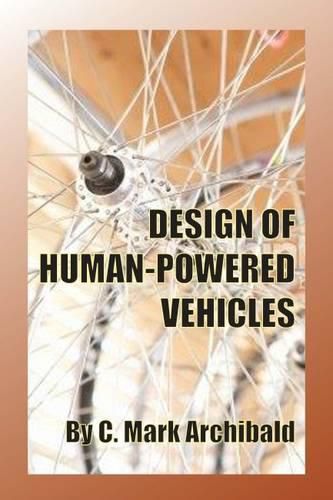Readings Newsletter
Become a Readings Member to make your shopping experience even easier.
Sign in or sign up for free!
You’re not far away from qualifying for FREE standard shipping within Australia
You’ve qualified for FREE standard shipping within Australia
The cart is loading…






This book is about the design of vehicles with wheels that are powered by human muscles alone. These can provide affordable, sustainable, and healthy transportation to people around the globe. The term Human-Powered Vehicle, or HPV, is sometimes used to denote a sub-class of vehicles including only high-performance bicycles or tricycles equipped with aerodynamic fairings. More generally, the term refers to any semi-recumbent bicycle. But the term should properly refer to any means of carriage, conveyance, or transport that is powered solely by human muscles. This book is limited to design of human-powered vehicles for land use. There are many reasons why the design and use of such vehicles is beneficial. In developed countries, using an HPV in lieu of an automobile (or in lieu of a second automobile for a family) can save $5,000 to $10,000 each year, while improving health and reducing emissions of greenhouse gases and pollutants. Greenhouse gas emission will be reduced by more than 4,000 kg per year due to the corresponding reduction in energy consumption of more than 17,000 kWh. In addition, infrastructure for cycling is far less costly than highways designed for automotive traffic. Human-powered vehicles were originally designed for transportation, and that is still their most important use. HPVs today provide clean, quiet, and efficient transportation. Perhaps the most compelling reason to use HPVs is sustainability: the environmental footprint of HPVs is typically much, much smaller than that of other modes of transportation. Despite these commonalities, HPVs are used by a variety of different people for a wide range of diverse reasons, including recreation, competition, cost, health, transportation, and concern for the environment. The contents include manufacturing processes and materials, performance modeling, handling, drivetrains, structures, components, human performance, and design strategies.
$9.00 standard shipping within Australia
FREE standard shipping within Australia for orders over $100.00
Express & International shipping calculated at checkout
Stock availability can be subject to change without notice. We recommend calling the shop or contacting our online team to check availability of low stock items. Please see our Shopping Online page for more details.
This book is about the design of vehicles with wheels that are powered by human muscles alone. These can provide affordable, sustainable, and healthy transportation to people around the globe. The term Human-Powered Vehicle, or HPV, is sometimes used to denote a sub-class of vehicles including only high-performance bicycles or tricycles equipped with aerodynamic fairings. More generally, the term refers to any semi-recumbent bicycle. But the term should properly refer to any means of carriage, conveyance, or transport that is powered solely by human muscles. This book is limited to design of human-powered vehicles for land use. There are many reasons why the design and use of such vehicles is beneficial. In developed countries, using an HPV in lieu of an automobile (or in lieu of a second automobile for a family) can save $5,000 to $10,000 each year, while improving health and reducing emissions of greenhouse gases and pollutants. Greenhouse gas emission will be reduced by more than 4,000 kg per year due to the corresponding reduction in energy consumption of more than 17,000 kWh. In addition, infrastructure for cycling is far less costly than highways designed for automotive traffic. Human-powered vehicles were originally designed for transportation, and that is still their most important use. HPVs today provide clean, quiet, and efficient transportation. Perhaps the most compelling reason to use HPVs is sustainability: the environmental footprint of HPVs is typically much, much smaller than that of other modes of transportation. Despite these commonalities, HPVs are used by a variety of different people for a wide range of diverse reasons, including recreation, competition, cost, health, transportation, and concern for the environment. The contents include manufacturing processes and materials, performance modeling, handling, drivetrains, structures, components, human performance, and design strategies.